Helix piercings: Everything you need to know about them
Helix piercing is a new trend in body art. This elegant curve of the ear is stepping into the spotlight, becoming a canvas for self-expression. It's not just a fad; it's a style revolution. Many people are opting for helix piercings to make a fashion statement and express themselves.

Source: UGC
TABLE OF CONTENTS
There are many options for ear piercings, each with varying popularity, healing times, upkeep costs, and jewellery choices. Before choosing your next piercing, explore the helix piercing options and learn all about its risks (dos and don'ts).
Helix piercings
What is a helix piercing? A helix piercing is done on the outer upper cartilage of the ear. Its name is derived from the DNA helix, as there are resemblances between the two. The cartilage resembles the DNA strands, while the piercing represents the connecting strands made of sugars and phosphates.
Helix piercings are favoured for their versatility. They offer a wide range of earring options and design choices. They can be positioned anywhere along the outer perimeter of the ear, giving individuals the flexibility to select the location that complements their preferences.
What should I know before getting a helix piercing?
Before getting a helix piercing, it is essential to have basic knowledge of this type of piercing. From choosing the right jewellery to understanding the healing process, this guide will give you everything you need to know to rock your helix piercing confidently.
1. Choose a good piercing shop
It is important to choose a professional piercing shop for helix piercings. Inexperience risks infection or damage to your ear. Professional shops offer sterile environments, avoid piercing guns, and provide support during healing.
2. Get aftercare needs in advance
Stock up on aftercare products before your piercing to reduce post-piercing worries. Essential items include antimicrobial soap, saline solution or salt soak ingredients, and an applicator like gauze pads or cotton balls. This preparation saves time and eases pre-piercing nerves.
3. Choose your helix jewellery
It is important to choose your jewellery before getting a helix piercing. The best kind of jewellery for a helix piercing should be stainless steel or titanium. The two are relatively inert and should not cause a reaction in your body when used. These pieces of jewellery include studs, rings, and hoop rings.
4. Know the risks of getting a helix piercing
It is essential to know that risks are associated with it, mainly if you use something other than professionals. Some of these include infection if proper aftercare isn't followed, which can lead to pain, swelling, or discharge around the piercing site.
Allergic reactions may occur if you're sensitive to certain metals in the jewellery, causing itching, redness, or irritation. Poor piercing techniques or inexperienced piercers could damage the cartilage, leading to complications like keloids or scarring.
Types of helix piercings
Helix piercing involves cartilage piercing. There are different types of helix piercings, as listed below.
1. Stud helix piercing
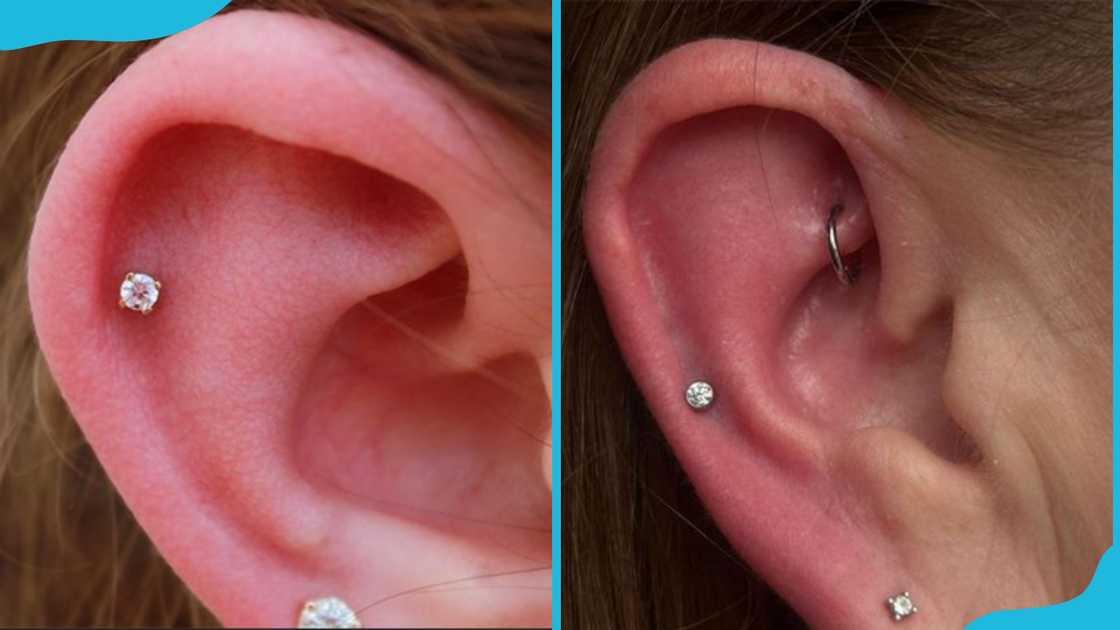
Source: UGC
A stud helix piercing is when a small piece of jewellery, called a stud, is placed through the cartilage along the outer edge of the ear. It's a popular type of piercing where the jewellery sits snugly against the ear, giving a subtle yet stylish look. This type of piercing is often chosen for its simplicity, as it can be easily customised to suit personal preferences.
2. Forward helix piercing
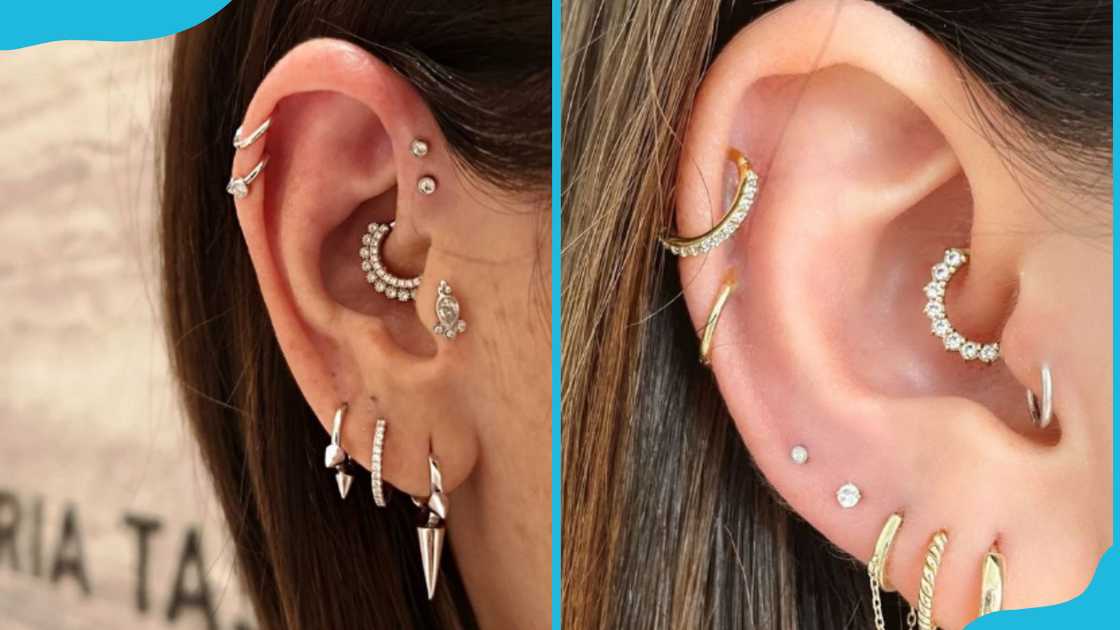
Source: UGC
Forward helix piercings are done on the front part of the ear's cartilage above the tragus, opposite the hairline. If desired, you can get multiple forward helix piercings, like doubles or triples, in one session. They're usually not painful, around a 5-6/10 on the pain scale, and heal in 3 to 9 months.
3. Lower helix piercing
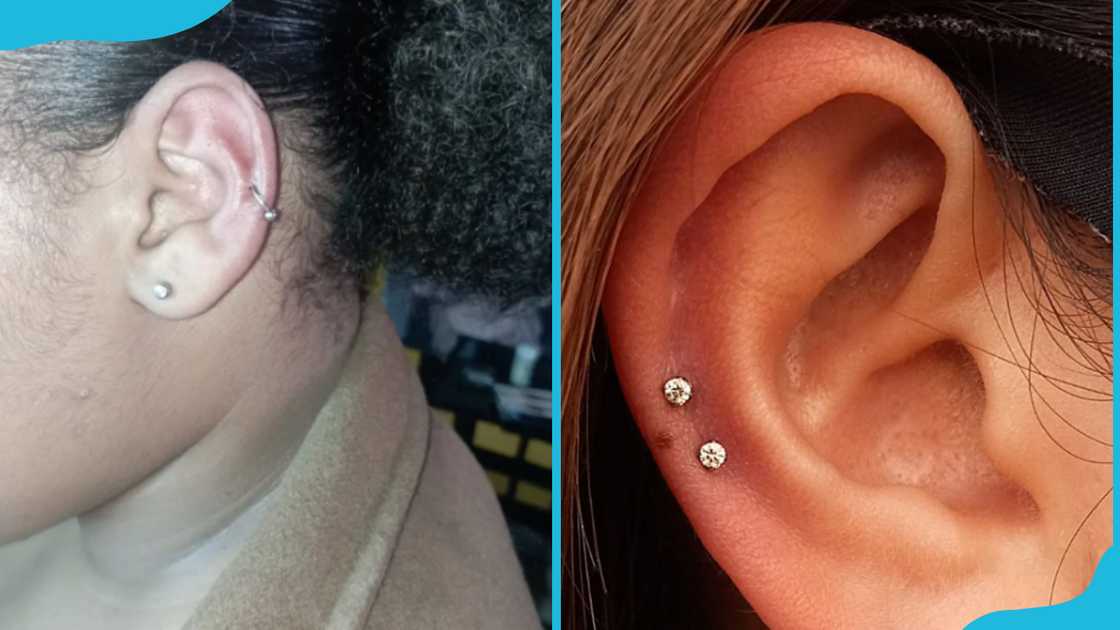
Source: UGC
Lower helix piercing, or auricle piercing, involves piercing the lower part of the outer ear's curved cartilage. This part of the ear sits in the middle where the two parts of your outer ear meet. Compared to other types of piercing, this type comes with minimal pain.
4. Flat helix piercing
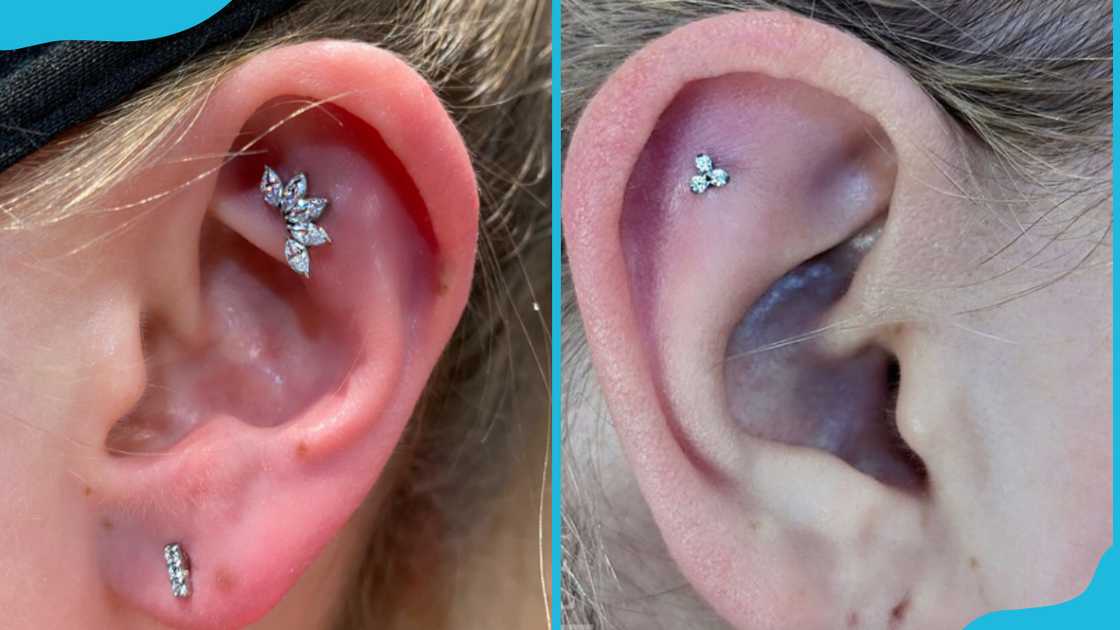
Source: UGC
The flat helix piercing is in the flat part of the upper ear's cartilage. It can be pierced once as the main focus of an ear arrangement or multiple times to resemble constellations or in a random pattern. This type of piercing is considered to be moderately painful. Flat helix piercings are the perfect placement for big and sparkly studs.
5. Mid-helix piercing
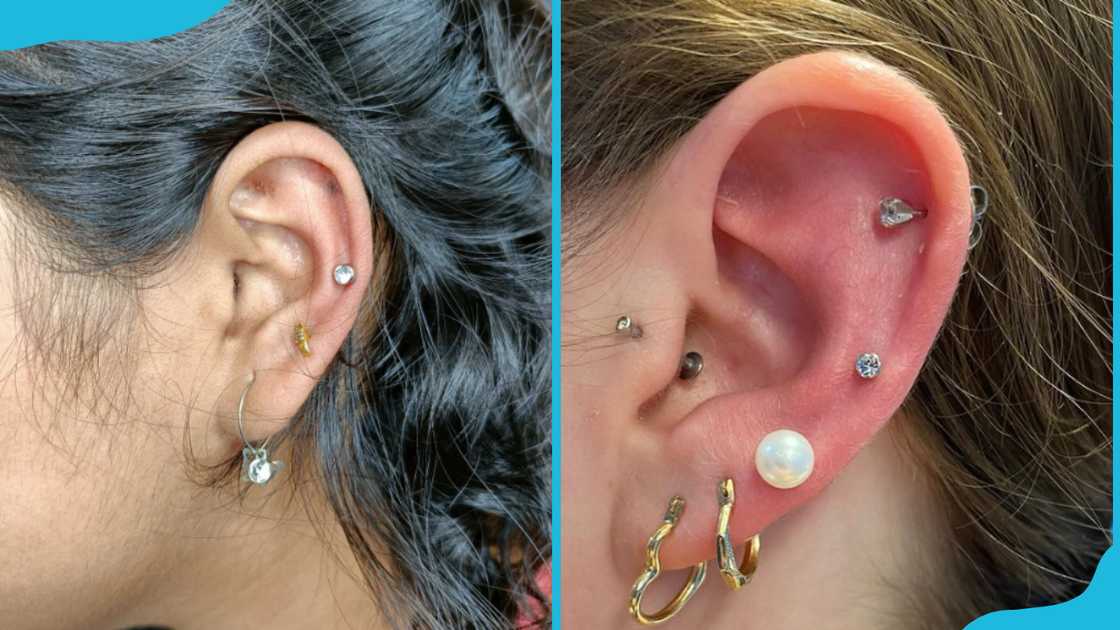
Source: UGC
Mid-helix piercing also involves piercing of the cartilage. These kinds of piercings are believed to help stimulate nerves. When nerves are stimulated in this part of the ear, it is considered to help with insomnia and sometimes allergies.
6. Triple helix piercing
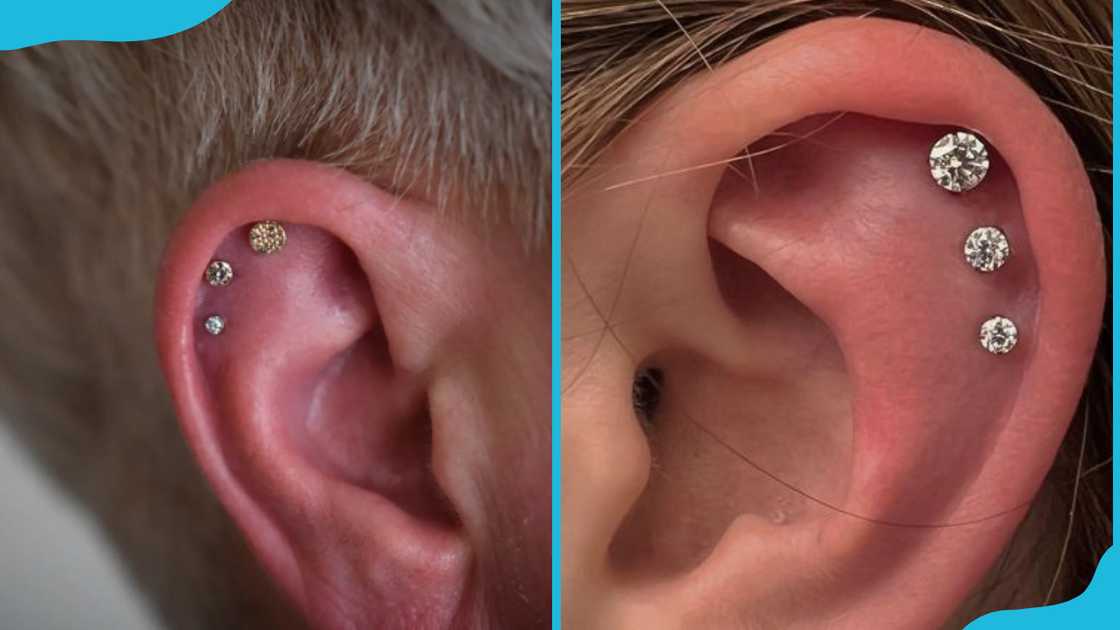
Source: UGC
A triple helix piercing involves three piercings along the edge of the helix root. It's trendy, especially among teens, but it is limited to ear piercings. Three different sizes of labrets or barbell studs are placed on the front rim of the ear. It can be done on one or both ears, drawing attention to the face's profile, positioned vertically above the tragus.
How painful is helix piercing?
Among cartilage piercings, the helix is generally less painful due to its thinner cartilage. However, it's still more painful than typical lobe piercings. On average, helix piercings usually rank around 4/10 on the pain scale, but the discomfort should be brief when piercing.
What is the helix-piercing healing time?
Do helix piercings heal easily? Helix piercing typically takes two to four months to heal initially and six to nine months to fully heal. The exact healing time can vary depending on your piercing and your body. You'll know it's healed when any discharge, swelling, redness, flaking, or soreness subsides.
What does helix piercing symbolise?
The helix piercing is typically chosen for aesthetic or personal preferences rather than specific symbolic meanings. It can represent individuality and individual style, offering various jewellery options to showcase personal tastes.
Helix piercing is not just a trend but a significant evolution in body art. It offers individuals a unique opportunity for self-expression and personal style. As more people embrace this form of piercing, it becomes clear that the helix is not merely a bystander in the world of piercings but a prominent feature deserving of its place in the spotlight.
Yen.com.gh recently released a fantastic list of knee tattoos for men. Leg tattoos have become more popular among males worldwide. The best part about a leg tattoo is that it stands out from others while remaining easily concealed behind clothing.
The knee might not be the first place that comes to mind when considering tattoo locations. However, for some, the knee serves as a distinctive canvas for some of the most beautiful and imaginative patterns possible. Read the article for more information about knee tattoos and healing time.
Source: YEN.com.gh






